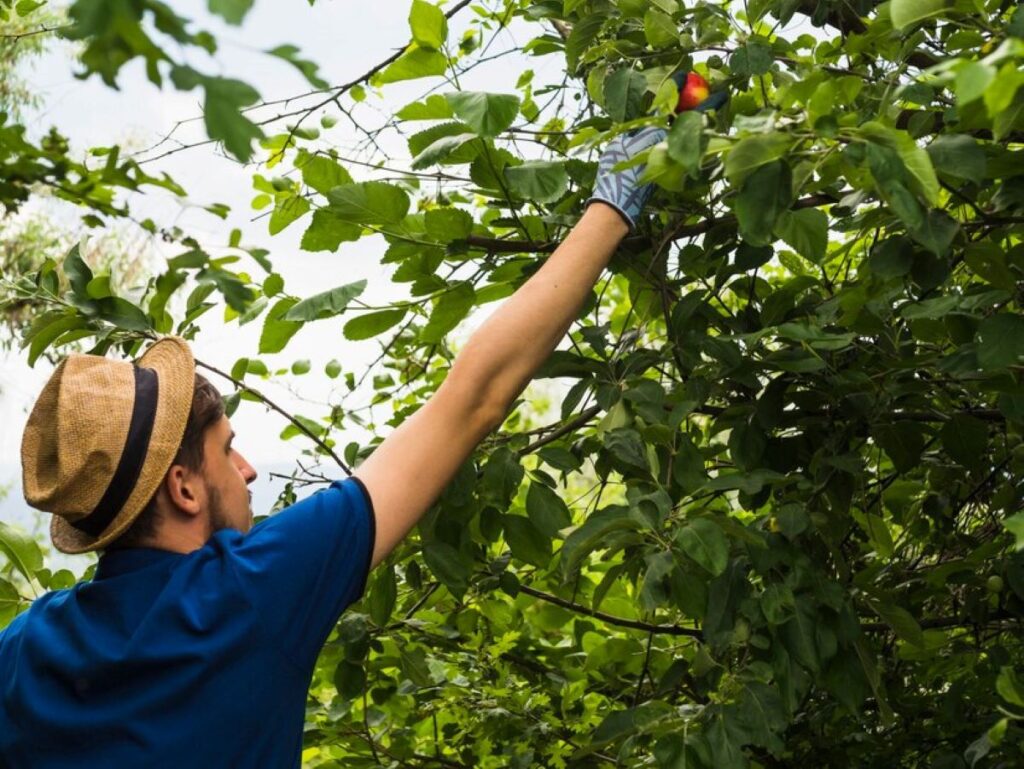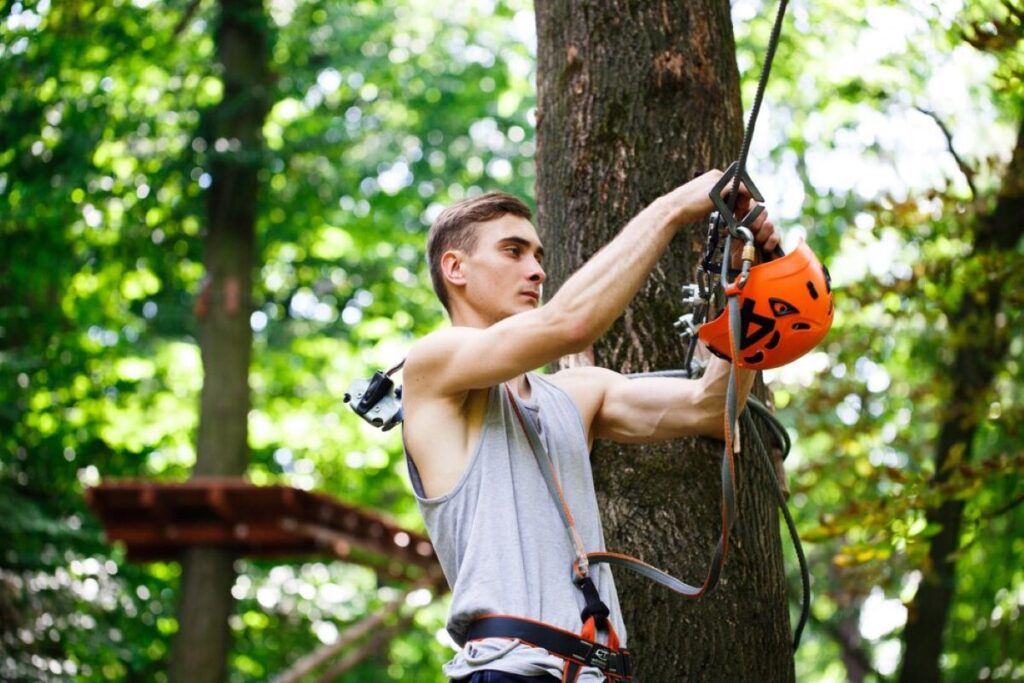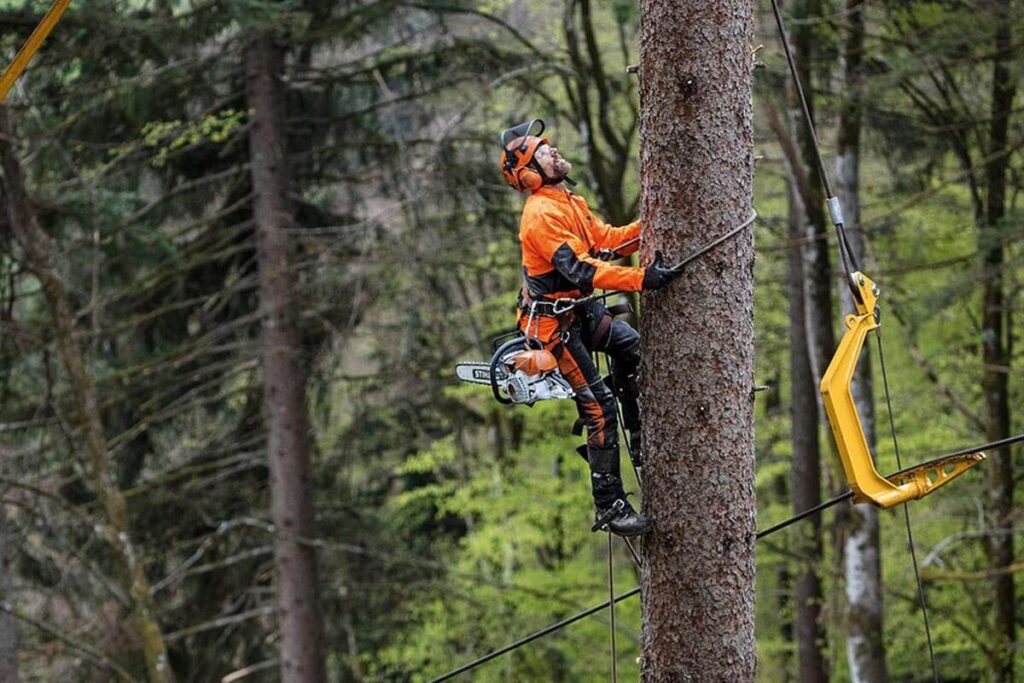The Importance of Choosing the Right Tree Pruning Service
Proper tree pruning is an essential part of maintaining a property. It directly affects the appearance and safety of both homes and businesses. Professional tree pruning services are crucial in:
- Keeping trees healthy and growing in the right direction
- Avoiding potential dangers from dead or sick branches
- Preventing damage to buildings caused by overgrown tree limbs
- Allowing more natural light into the area
- Maintaining the strength and stability of trees
How Expert Tree Pruning Can Increase Property Value
The impact of professional tree pruning on property value is significant. According to real estate experts, well-maintained trees can increase property value by 10-20%. Here’s how properly pruned trees can benefit your property:
- Improved first impression (kerb appeal)
- Enhanced beauty of the landscape
- Reduced risk of damage to the property
- Lower insurance costs
- Better energy efficiency through strategic management of shade
Why Choosing the Right Tree Pruning Company Matters
When selecting a tree pruning company, it’s important to be cautious. Improper pruning methods can cause permanent harm to trees, decrease property value, and create safety hazards. Here’s why you should choose the right service provider:
- Expertise: Experienced professionals know how to prune trees correctly for optimal growth and health.
- Proper equipment: Specialized tools and equipment are necessary for safe and effective pruning.
- Professional knowledge: Understanding tree biology and growth patterns allows for tailored pruning techniques.
By hiring a qualified tree pruning company, you can ensure that your trees are maintained properly, enhancing their beauty and value while minimising any potential risks.
1. Check for Certification and Qualifications
Professional tree pruning requires extensive knowledge and expertise. Certified arborists possess specialised training in tree biology, diseases, and proper maintenance techniques, making them qualified experts in tree care services.
A certified arborist’s qualifications include:
- Level 2-5 certifications in arboriculture
- Membership in professional organisations like:
- International Society of Arboriculture (ISA)
- Tree Contractors Association
- Arboriculture Australia
The specialised training these professionals receive encompasses:
- Tree biology and physiology
- Disease identification and treatment
- Structural pruning techniques
- Risk assessment and management
- Safety protocols and procedures
Proper certification ensures arborists understand the critical aspects of tree care:
- Identifying diseased or damaged branches
- Determining appropriate pruning cuts
- Maintaining tree shape and structure
- Promoting healthy growth patterns
- Preventing potential hazards
Certified professionals stay updated with the latest industry standards and techniques through continuing education programmes. Their expertise helps preserve tree health, extend lifespan, and maintain aesthetic appeal through proper pruning practices.
Working with certified arborists minimises the risk of improper cuts that could lead to:
- Tree decay
- Disease susceptibility
- Structural weakness
- Stunted growth
- Premature death
2. Verify Insurance and Licensing
Proper insurance and licensing are crucial safeguards when selecting a tree pruning company. A reputable service provider should have two essential types of insurance:
- Liability Insurance (minimum £20M coverage)
- Workers’ Compensation Coverage
These insurance policies protect both property owners and workers from potential accidents or damages during tree pruning operations. Without adequate coverage, property owners might face significant financial risks if accidents occur on their premises.
Professional tree pruning companies must hold valid local operating licenses. These licenses demonstrate:
- Compliance with regional regulations
- Adherence to industry standards
- Legal authorisation to perform tree work
To verify a company’s credentials:
- Request copies of current insurance certificates
- Check local authority databases for valid licenses
- Confirm policy coverage amounts meet industry standards
- Verify policy expiration dates
Red flags to watch for:
- Reluctance to provide insurance documentation
- Expired or insufficient coverage
- Missing local operating permits
- Inability to prove worker’s compensation coverage
Tree pruning involves inherent risks, including potential property damage and worker injuries. Licensed and insured companies maintain strict safety protocols and provide financial protection against unforeseen incidents, such as those covered under this comprehensive guide on insurance coverage. These credentials also indicate professional commitment and reliability in service delivery.
3. Assess Reputation and Reviews
A tree pruning company’s reputation serves as a reliable indicator of their service quality and professionalism. Professional review platforms and social media channels provide valuable insights into past customer experiences and satisfaction levels.
Key Review Sources to Consider:
- Better Business Bureau (BBB) ratings and accreditation status
- Google Business reviews
- Industry-specific platforms
- Social media feedback
- Local community forums
The volume and consistency of positive reviews paint a clear picture of a company’s track record. Look for specific mentions of:
- Punctuality and reliability
- Quality of workmanship
- Clean-up practices
- Communication skills
- Problem-resolution abilities
Direct References from previous clients offer detailed insights into a company’s performance. When requesting references:
- Ask for contacts from projects similar to yours
- Inquire about projects completed within the last 6-12 months
- Request before-and-after photos of completed work
A reputable tree pruning service maintains transparent communication channels and responds professionally to both positive and negative feedback. Companies that actively engage with customer reviews demonstrate commitment to service improvement and client satisfaction, which is essential in understanding how to hear the voice of the customer.

Red flags in reviews might include:
- Repeated complaints about pricing discrepancies
- Reports of property damage
- Mentions of poor clean-up practices
- Concerns about worker conduct
- Unresolved customer disputes
4. Request Detailed Written Quotes
A detailed written quote is an important document in the process of choosing a tree pruning service. Professional tree pruning companies should provide comprehensive estimates that break down:
- Labour costs
- Equipment fees
- Disposal charges
- Timeline estimates
- Specific pruning techniques to be used
- Any additional services required
Cost Comparison Strategy:
- Request quotes from 3-5 different companies
- Ensure each quote covers identical scope of work
- Watch for significant price variations that might indicate quality differences
- Look for itemised breakdowns rather than lump sum totals
The scope of work should detail specific tasks such as:
- Branch removal specifications
- Clean-up procedures
- Waste disposal methods
- Safety measures implementation
- Post-pruning maintenance recommendations
Red Flags in Written Quotes:
- Vague or single-line descriptions
- Missing insurance details
- Undefined project timelines
- Unclear payment terms
- Hidden or ambiguous fees
A professional tree service should include potential additional costs that might arise during the project, such as:
- Emergency equipment rental
- Council permit fees
- Access requirements
- Specialised safety equipment needs
- Extra waste removal services
These detailed quotes become valuable reference documents throughout the project and help prevent misunderstandings about service expectations.
5. Inquire About Safety Practices
Safety practices serve as a critical benchmark in evaluating professional tree pruning companies. A reputable service provider implements comprehensive safety protocols that protect both workers and property.
Essential Safety Measures Include:
- Personal Protective Equipment (PPE)
- Safety helmets with face shields
- Cut-resistant gloves
- Steel-toed boots
- High-visibility clothing
- Fall protection harnesses
- Equipment Safety Protocols
- Regular maintenance checks
- Proper tool sanitisation
- Emergency shutdown procedures
- Equipment certification records
Professional tree pruning companies must adhere to strict industry safety standards, including:
- Work Health and Safety (WHS) regulations
- Australian Standards AS4373-2007 for pruning operations
- Height safety compliance requirements
- Safe work method statements (SWMS)
The presence of a dedicated safety officer on-site demonstrates a company’s commitment to maintaining rigorous safety standards. This role ensures proper implementation of safety protocols and immediate response to potential hazards.
Legitimate tree pruning services conduct regular safety training sessions for their staff, covering:
- Emergency response procedures
- Latest safety equipment operation
- Risk assessment techniques
- Updated safety regulations
- First aid certification
A thorough inspection of these safety practices helps identify companies that prioritise worker protection and professional service delivery.
6. Assess Experience and Quality of Equipment
The level of experience of a tree pruning company directly affects the quality of their service and the results of their projects. Professional arborists with a wide range of completed projects show proven skill in dealing with various types of trees and complicated pruning needs.
Important Signs of Experience:
- A history of successful similar projects
- Expertise in specific types of trees
- Number of years serving the local area
- Professional qualifications and ongoing education
The standard of tools used is crucial in achieving accurate cuts and preserving the health of trees. Tools meant for professionals guarantee clean cuts that encourage proper healing and lower the chance of disease spreading.
Must-Have Tools:
- Sharp, well-kept pruning shears
- Tools for cutting branches and long-reaching pruners meant for professionals
- Specialised equipment for climbing
- Modern machinery for grinding stumps
- Clean cutting tools
Expertise in structural pruning is a key part of professional tree care. Skilled arborists are knowledgeable about:
- Techniques for reducing the size of crowns
- Methods for preserving branch collars
- Correct angles for cuts to ensure healing
- Assessing growth patterns
- Understanding weight distribution
Companies that invest in top-notch tools and have a complete inventory show their dedication to providing professional service. Regular upkeep of equipment, improvements to cutting technology, and following industry standards demonstrate a service provider’s commitment to delivering high-quality tree care.
The combination of vast project experience and professional equipment allows for precise implementation of structural pruning techniques, leading to healthier trees and improved visual appeal. Incorporating proper pruning techniques further enhances the effectiveness of these services.
7. Ensure Clear Communication Throughout The Process
Clear communication is essential for successful tree pruning projects. Professional tree service companies establish detailed project timelines at the beginning, specifying:
- Start and completion dates
- Daily work schedules
- Weather contingency plans
- Access requirements to the property
A reputable tree pruning service provides comprehensive care instructions for post-pruning maintenance, including:
- Watering schedules based on tree species
- Signs of stress to watch for
- Seasonal care requirements
- Recommendations for future pruning cycles
Regular client updates keep property owners informed about:
- Daily progress reports
- Any unexpected challenges encountered
- Adjustments to the original plan
- Documentation of completed work stages
Professional arborists maintain open communication channels through multiple methods:
- Direct phone contact
- Email updates with photos
- On-site consultations
- Digital project tracking systems
Clear communication helps prevent misunderstandings, ensures project efficiency, and creates a positive working relationship between the service provider and the client. A reliable tree pruning company maintains consistent contact from the initial consultation through project completion, demonstrating their commitment to service excellence and customer satisfaction. You may like to visit https://run4love.org/backyard-stump-grinding-a-homeowners-guide/ to get more about Backyard Stump Grinding: A Homeowner’s Guide.

8. Be Wary Of Scams In The Industry
The tree pruning industry has its fair share of dishonest operators looking to take advantage of unsuspecting property owners. By knowing the common tactics used by scammers, you can protect yourself from fraudulent practices.
Red Flags to Watch For:
- Door-to-door solicitors offering “today only” deals
- Demands for full payment upfront
- Significantly lower quotes than competitors
- No written contracts or estimates
- Pressure tactics to make immediate decisions
- Claims of being “in the neighbourhood”
Protection Strategies:
- Request proof of insurance and certification
- Document all agreements in writing
- Take photographs before and after work
- Structure payments based on completion milestones
- Retain a portion of payment until work meets satisfaction
Payment Best Practices:
- Never pay full amount upfront
- Issue payments via traceable methods
- Request itemised invoices
- Keep detailed records of all transactions
- Obtain written warranties for work completed
A legitimate tree pruning company welcomes scrutiny of their credentials and maintains transparent business practices. Professional arborists provide detailed quotes, clear payment terms, and stand behind their work quality. Establishing payment schedules tied to specific completion milestones creates accountability and ensures service delivery meets agreed standards.
Conclusion
Choosing a reputable tree pruning company is a vital investment in your property’s value and the health of your landscape. Professional arborists have the specialised knowledge, proper equipment, and safety protocols necessary for optimal tree care. The right service provider will protect both your property and the health of your trees through:
- Expert Assessment: Certified arborists accurately evaluate the condition of your trees
- Quality Service: Professional teams deliver precise pruning without causing damage
- Long-term Benefits: Proper pruning improves the health of your trees and enhances the appearance of your property
- Risk Management: Licensed companies provide protection against potential liabilities
To secure reliable tree pruning services, it’s important to thoroughly evaluate the qualifications, insurance, reputation, and communication practices of potential providers. This careful selection process ensures that your trees receive expert care while also safeguarding the value and safety of your property.

